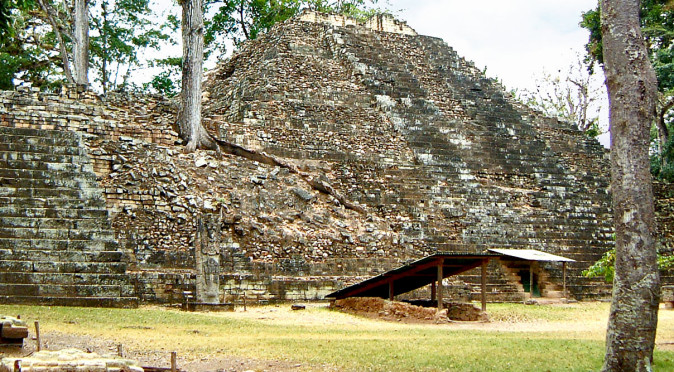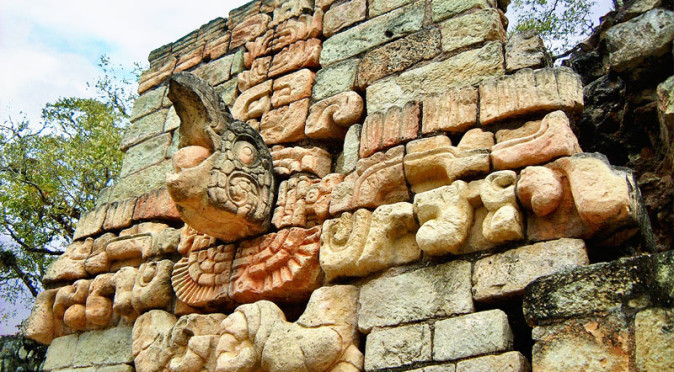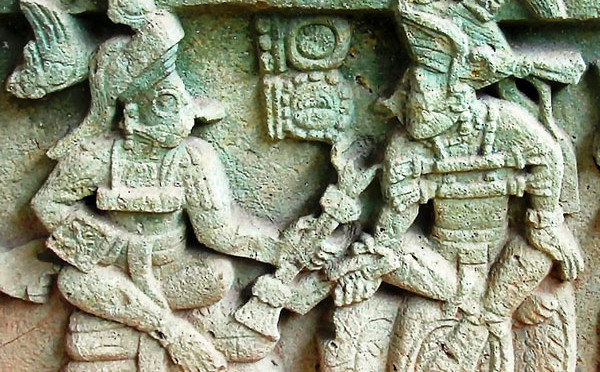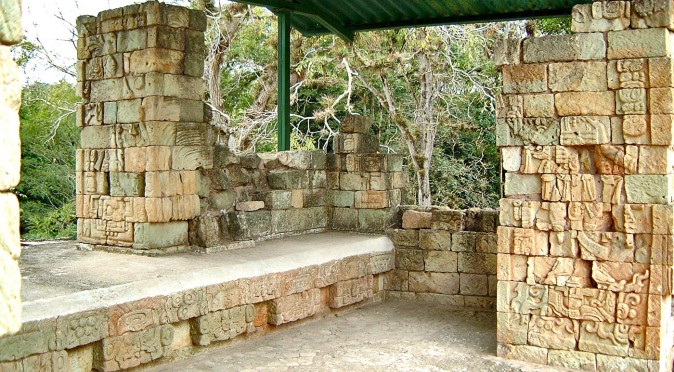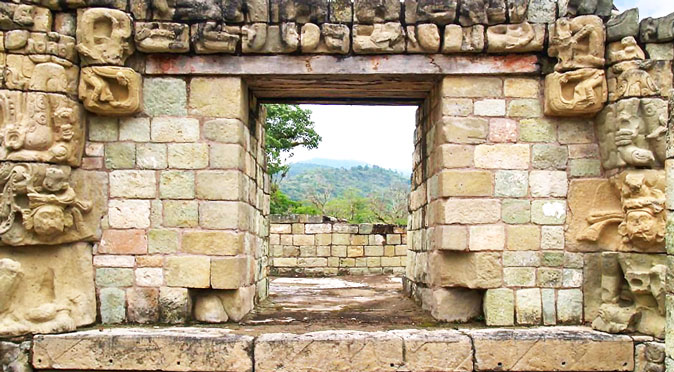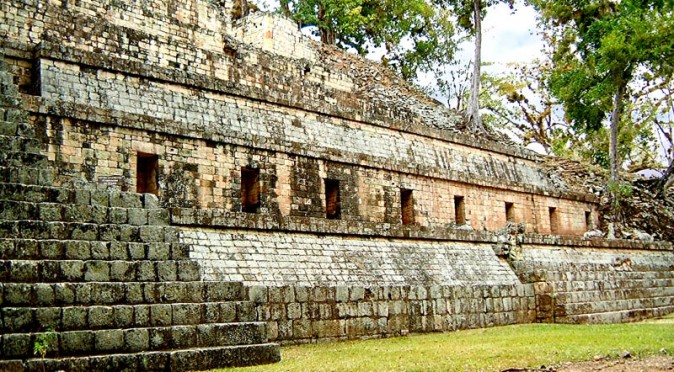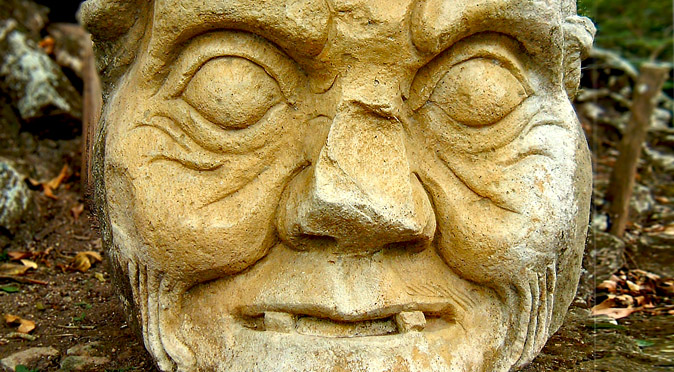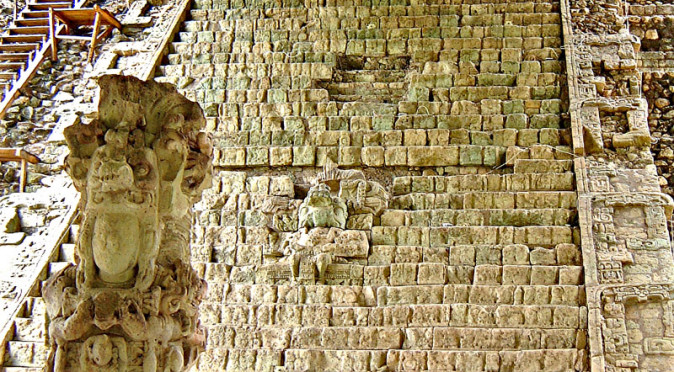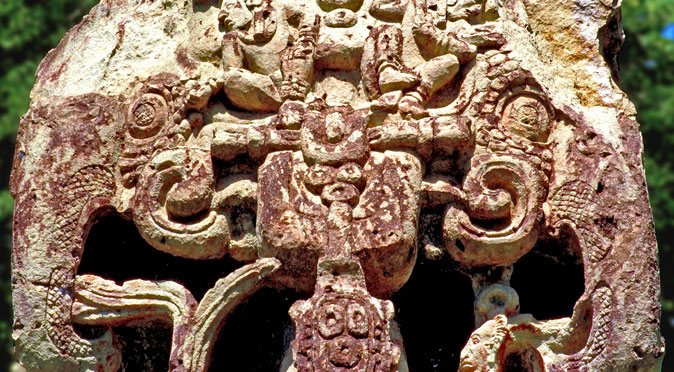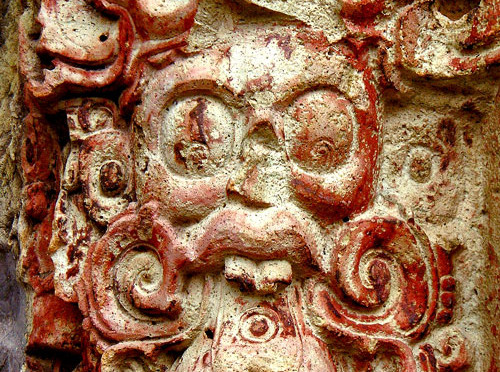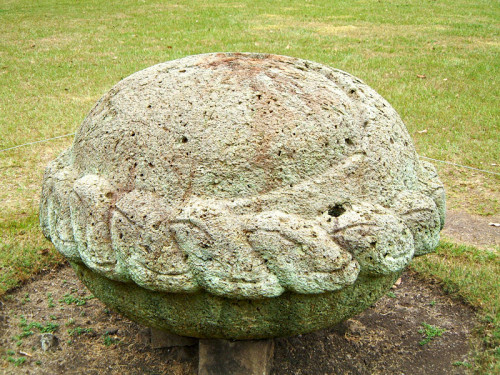
Altar A The intriguing Altar to Stela A appears to be a very basic form of the mythological Turtle Shell that supports the Earth. As such, it would probably have been dedicated to the God of Maize and Vegetation, and offerings would have been made to it in the hope that it would bring about abundant crops. It is twinned with Stela A which was dedicated on 9.14.19.8.12 (30th January, 731AD) by Waxaklajun Ub’aah K’awiil (18 Rabbit). This obviously predates the assassination of 18 Rabbit, which resulted in Quirigua taking independent control of the lucrative jade trade on the Motagua River. This event is thought to have left Copan unable to financially support its vast population of 20,000 people and start the steady decline of the city. However, if this altar was built prior to this event, then it would suggest the city was already struggling for food during the reign of 18 Rabbit. Note the oddly carved out circle on the top in fig. W1123: it is thought that this helped collect the flow of blood from sacrificial victims who would be strewn across it to have their beating heart cut out. The blood could then collate on one side of the altar and drip down the clefts of the shell. The blood of sacrificial victims was as important as the heart itself, which was of course offered to the Gods. The clever design of Altar A would have allowed the priest to collect the blood in multiple containers as it oozed through the channels created by the carved pattern around its perimeter. The stains of blood still appear to be visible too!
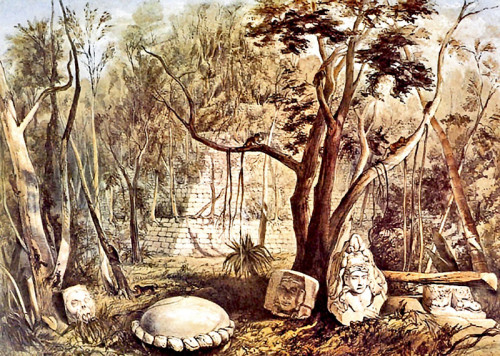
W1123C – Catherwood Etching This enigmatic Altar has captured the imagination of onlookers since Copán was rediscovered by Europeans in the 18th century. It was recorded by Frederick Catherwood during his expedition in 1839 (see fig. W1123C) and featured in his book, Views of Ancient Monuments in Central America, Chiapas and Yucatan, published in 1844. More recently, it has captured the imagination of UFOlogists who believe it represents a Flying Saucer – for obvious reasons – and consider it to be proof of interstellar contact between the mysterious artisans of Copan and an Alien space-race. The rather bizarre artistry found at Copan does certainly seem alien to a modern, westernised perspective – in the 16th century, the Christian missionaries decreed such art as the work of the devil. Interestingly, the Maya did seem to believe that their ancestors lived in the heavens amongst the constellation of Orion (read more about this in the article about the Maya Creation Stones).

